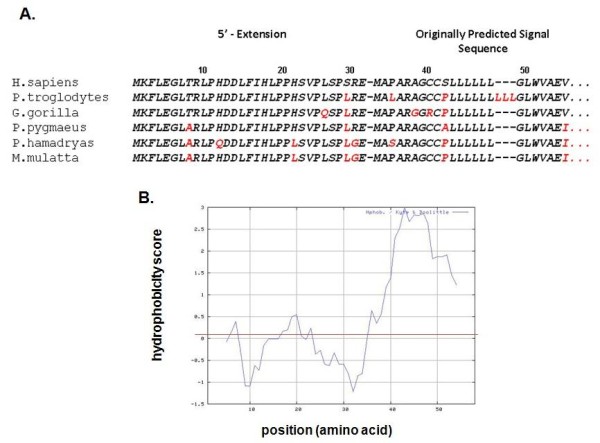Figure 4.

Predicted amino terminal extensions of the RNase 8 coding sequence are conserved in primate genomes. (A) Shown are coding sequences that incorporate RNase 8 from Build 2.1 of the genome of P. troglodytes and Build 1.1 of M. mulatta and original sequence data generated from RNase 8 isolated from genomic DNA from P. troglodytes (chimpanzee; JQ353681), P. pygmaeus (orangutan; JQ353682), P. hamadryas (babooon' JQ353680), and G. gorilla (gorilla; JQ353683). Amino acids 1-31 are from the extended open reading frame, amino acids 32-55 (separated by hyphen) are those originally predicted as components of a signal sequence; divergence from the H. sapiens (human) sequence is indicated in red. (B) Evaluation of the predicted hydrophobicity of the human RNase 8 amino terminus (amino acids 1-55) via the Kyte-Doolittle algorithm [29].
